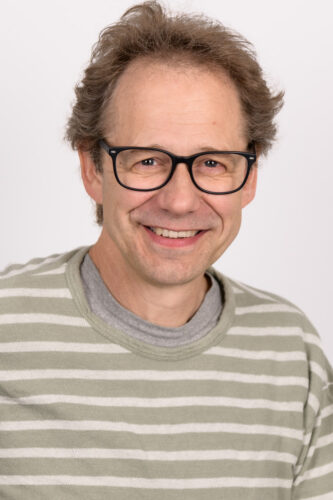Mats Hansson is a professor of Plant Molecular Biology and the Head of the Division of Molecular Biosciences at the Department of Biology, Lund University. Previously, he was a professor at the Carlsberg Laboratory in Copenhagen and, before that, professor at the Department of Biochemistry in Lund. In his research, he tries to understand molecular processes in plants related to the design of plant architecture, time to flowering and chlorophyll biosynthesis. His favourite plant is barley (Hordeum vulgare L.), and he often works with mutants! Read more in the interview below!
What is currently at the top of your research agenda?
At the moment, I am in a grant writing phase, which has paused an intensive period of article writing. In fact, I enjoy both processes. Writing grants stimulates a lot of ideas—some more promising than others. Last week, I attended the biannual meeting of the Scandinavian Plant Physiology Society. The meeting was in Copenhagen. It was a great opportunity to catch up with colleagues, particularly from the Scandinavian region.
Tell us about your latest publication.
My latest publication is one I am very proud of. It is another excellent contribution from my now former PhD student, David Stuart. In this paper, we describe a pipeline for identifying deficient genes in barley mutants. Specifically, we applied the method to yellow Xantha-j mutants and discovered they were deficient in the gene that encodes the final enzyme in the chlorophyll biosynthesis pathway. For years, identifying the deficient gene in barley mutants has been a bottleneck – like searching for a needle in a haystack. This breakthrough removes that obstacle, opening up a wide range of future experiments.
What led you to your particular field of research?
As a student, I was impressed by molecular biology. Over 30 years ago, if you wanted to do advanced molecular biology, you had to be a microbiologist. That is why I earned a PhD in microbiology, focusing my thesis on heme biosynthesis in Bacillus subtilis. Heme, like chlorophyll, is a tetrapyrrole, and during my postdoc in Denmark, I shifted my focus to chlorophyll biosynthesis in barley. I was the last postdoc of my host Diter von Wettstein. When he retired, he offered me his collection of barley mutants defective in chlorophyll biosynthesis and chloroplast development – nearly a ton of seeds – which I moved to Sweden. This collection has remained central to my research, although I have since expanded to studying other types of barley mutants as well.
What are the implications of your research for society?
While most of my work is academic, with applications likely to emerge in the future, there are aspects that hold more immediate societal relevance. Barley is a significant crop, and this allows me to pursue applied research with more direct benefits. For instance, my projects on resistance to lodging (plant architecture) and plant adaptation to different geographic regions (flowering time) have practical applications. However, I have recently joined an EU consortium where my work on chlorophyll mutants is being applied to enhance crop yields.
Finally, let´s say you have unlimited research funds; where would your research be five years from now?
With unlimited resources, I would broaden my research to integrate more of my earlier work as a biochemist. Specifically, I would combine our current genetic and genomic approaches with biochemical experiments to explore the mechanistic details of the proteins encoded by the genes we identify. I have always been fascinated by structural analyses of proteins through techniques like X-ray crystallography and cryo-electron microscopy, as a structure reveals so much about the protein’s function. Additionally, I have an embryo of a project involving synchrotron-radiation micro-computed tomography (SRµCT) and image analysis via machine learning. Currently, we are scanning mature barley kernels, but I would love to extend this to observe seed development in a growing plant. Given the technical complexity of this work, I would certainly need expertise beyond my current skill set to push it forward.
Have you enjoyed reading this article? Be sure to check out Mat’s 2016 interview to see how far his research career has come and the exciting developments along the way!

Thank you for a very interesting interview, Mats! We wish you the best of luck and success in your future path!
(Main photo: Inger Ekström)

